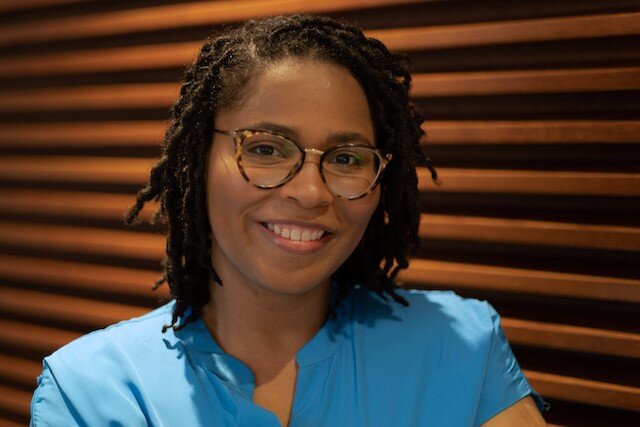Written by Hope Jackson with permission to share from Capita Social.
Often credited to Alice Walker, colorism, as defined by her is the “prejudicial or preferential treatment of same-race people based solely on their color.” Unlike racism, colorism can occur within and across races. Further, colorism is highly gendered and often associated with beauty and socio-economic status.
While coined by Alice Walker, a Black American author, colorism exists beyond the Black community into other communities of color spanning across countries and continents. Specifically, here in the United States, colorism can be traced back to slavery when slaves were raped by slave owners and the resulting offspring were of lighter complexion. The lighter colored offspring were favored and given domestic work instead of being forced to work in the fields. As the United States shifted away from traditional forms of slavery, colorism along with many other consequences of slavery were institutionalized and systematically engrained. The privilege of lighter skin found its way into beauty standards, employment opportunities, the criminal justice system, and education.
Within education, the effects of colorism trend more sociological and psychological as students and teachers assess themselves in relation to each other and their peers. Focusing specifically on the teacher-student dynamic we can explore how subtle, yet pervasive colorism can be.
TEACHERS
Teachers often treat lighter skinned students more favorably. They implicitly, or indirectly, associate lighter skinned students with being smarter, more academically inept, and better behaved. As a result, lighter skinned students are afforded more opportunities, given more classroom attention, and encouraged more often to attend college or seek higher level educational opportunities. Alternatively, darker skinned students are dissuaded from taking more advanced course work and receive unfair disciplinary action more frequently.
As educators, administration, and coaches responsible for students during the bulk of their waking hours, it is important to proactively and enthusiastically address colorism personally and within the school and classroom settings. Students learn so much about themselves and their relationship to the world through their time in the classroom. Arguably, the classroom is one of the first places outside of the family where they start to establish their confidence and form opinions about their selves that last into adulthood. It is vital that seeds of encouragement and deservingness are being planted in the classroom, even if the outside world is slow to reciprocate such methods. One of the benefits of a classroom is that, within reason, educators have the opportunity to create alternate worlds—worlds that are kinder and more equitable than our own.
STUDENTS
Students learn so much about themselves and the world, both formally and informally, during their time at school. Often, other than their home and their community, school and the teacher-student dynamic is where they begin building their confidence in themselves and formulating awareness of the opportunities available to them. It is during this critical time that dreams can be validated or crushed. This is why it is important to proactively and enthusiastically address colorism and it’s damaging effects. We are teaching students about the world, their relation to and in it, and what that means in terms of access and opportunities. Beyond that, educators may actively, though possibly implicitly make concrete decisions that affect the trajectory of students based on skin color and tone.
SEEING TYRONE: A FICTIONAL CASE OF THE OPPORTUNITY COST OF COLORISM
Tyrone is a 7-year-old, Black boy with a deep-dark complexion. Factually, he is tracking with rest of Mrs. Henry’s second grade class. However, like many other 7-year-olds, Tyrone has trouble sitting still and focusing on the tasks at hand. Also, in Mrs. Henry’s class is Aidan. Aidan is also a Black boy, but he has much fairer skin and more European features such as a keener nose and loose ringlets. Factually, he tracks with the rest of the class except in reading where he struggles substantially. Aidan, similar to Tyrone, also struggles with staying focus and still.
Colorism in school looks like on Monday, Tyrone received a yellow for the day, on a green-yellow-red scale of daily performance, because he was unable to concentrate during the reading exercise. In turn, a note was sent home with him requesting that his parents work with him on his “self-control.” Aidan had a similar day, but still instead received a green for the day. His note home cited his fidgeting but suggested perhaps Aidan was bored with the material and may benefit from additional or more complex assignments.
Flashing forward to high school, both Tyrone and Aidan are seniors. Tyrone has been suspended three times this year for minor behavioral incidences, while alternatively Aidan was placed in detention. In base level classes, with above average grades, the school guidance counselor suggested community or technical college to Tyrone, concerned that he may not be “mature” enough for a university experience. Conversely, Aidan was placed in advanced and AP courses where he performed at an average level. When meeting with the counselor, she suggests not only applying to universities, but also to minority scholarships that have mentorship components to help him improve his study habits.
Years later, both Tyrone and Aidan end up working for the same company. Tyrone as a mid-level employee making $50,000. Aidan as CFO making $225,000.
While this is an extreme example, you can see how the implicit bias that results from colorism can be truly life altering. This case only tracks the opportunity and ultimately the financial impact of colorism in school, not the mental and social effects. Colorism is so much more than the “preferential treatment of same-race people based solely on their color.” Colorism is the more subtle, but just as systematic and dangerous cousin of racism.
Understanding this, we can see that there is no place for colorism in education. Educators, again, must proactively and enthusiastically address colorism—both in their actions and in the dynamics of the classroom. Colorism is a societal issue, but within classrooms, we have the power to create alternate societies—even if it’s just one 45-minute block at a time.

Hope Jackson was born and raised in Columbia, SC. She moved away after graduating from the University of South Carolina. While away, she lived in Indianapolis, Charlotte, and Malaysia—where she taught English as a Fulbright ETA Scholar. A trained business professional, Hope has recently and formally pivoted into policy spaces. Witnessing first-hand the challenges faced by her community, she was motivated to seek a more in-depth understanding of what role education and social policies play in overall success and achievement. A recent graduate of the Princeton MPA program, she believes it is critical that we keep and create policies that support the notion that success and achievement are for everyone, not just those who can afford it. Long term, she aims to marry her business, educational, and lived experiences together in ways that will promote continuous improvement, trust, and respect among policy makers and communities. She believes we should all be working to reform our nation, help those in need, and create equitable opportunities.






